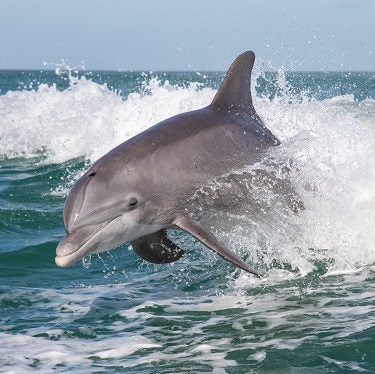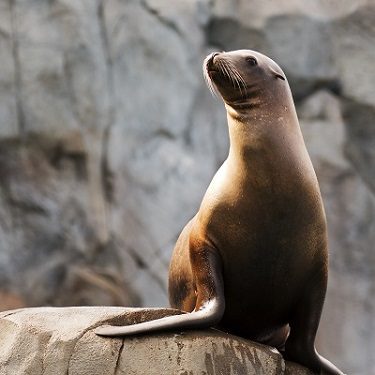Marine Life Encyclopedia
Ocean Fishes
Orange Roughy
Hoplostethus atlanticus
Distribution
Worldwide in tropical to temperate latitudes except the western Atlantic Ocean
eCOSYSTEM/HABITAT
Deep seamounts
FEEDING HABITS
Active predator
TAXONOMY
Order Beryciformes (squirrelfishes and relatives), Family Trachichthyidae (slimeheads)
Adult orange roughy are predators that live on or just over the seafloor, but near areas where strong currents bring their preferred prey (other fishes and squids) to them. Deep seamounts provide the right oceanographic conditions to form these strong currents. Orange roughy grow no bigger than a few feet (less than one meter) and are eaten by larger fishes and sharks that feed near the seafloor.
This species reproduces through a behavior known as broadcast spawning, where several females release eggs and several males release sperm into the water column above the seafloor, all at the same time. This method increases the likelihood that eggs will become successfully fertilized and that fertilized eggs will not be eaten by egg predators near the seafloor. Scientists believe that, though orange roughy normally live in high densities, they migrate to form even denser aggregations for the purposes of spawning. Individuals do not reach sexual maturity until they are least 20 years old (perhaps not until they are 30-40).
Throughout much of its range, the orange roughy is considered overfished by fisheries scientists and at risk of endangerment by conservation groups (though it has not been formally assessed for the most well recognized list of threatened species – the IUCN Red List). The extremely long lifespan and the late age at maturity imply that a decimated population may take a half century or longer before it can recover. Without careful fisheries management and conservation efforts when necessary, orange roughy numbers could reach very low levels without much fishing effort. Furthermore, this species is captured primarily by bottom trawling, a method known to do extensive harm to bottom habitat (most notably long-lived deep-sea corals) and to accidentally capture high numbers of individuals of non-targeted species. These fishing practices and orange roughy population trends need to be carefully assessed by scientists in order to avoid risking this species.
Engage Youth with Sailors for the Sea
Oceana joined forces with Sailors for the Sea, an ocean conservation organization dedicated to educating and engaging the world’s boating community. Sailors for the Sea developed the KELP (Kids Environmental Lesson Plans) program to create the next generation of ocean stewards. Click here or below to download hands-on marine science activities for kids.
Get Involved

Donate Today
SUPPORT OUR WORK TO PROTECT THE OCEANS BY GIVING TODAY
With the support of more than 1 million activists like you, we have already protected nearly 4 million square miles of ocean.

TAKE ACTION NOW
Support policy change for the oceans
Decision-makers need to hear from ocean lovers like you. Make your voice heard!

VISIT OUR ADOPTION CENTER
SYMBOLICALLY ADOPT AN ANIMAL TODAY
Visit our online store to see all the ocean animals you can symbolically adopt, either for yourself or as a gift for someone else.

DOWNLOAD OCEAN ACTIVITIES
HELP KIDS DISCOVER OUR BLUE PLANET
Our free KELP (Kids Environmental Lesson Plans) empower children to learn about and protect our oceans!




